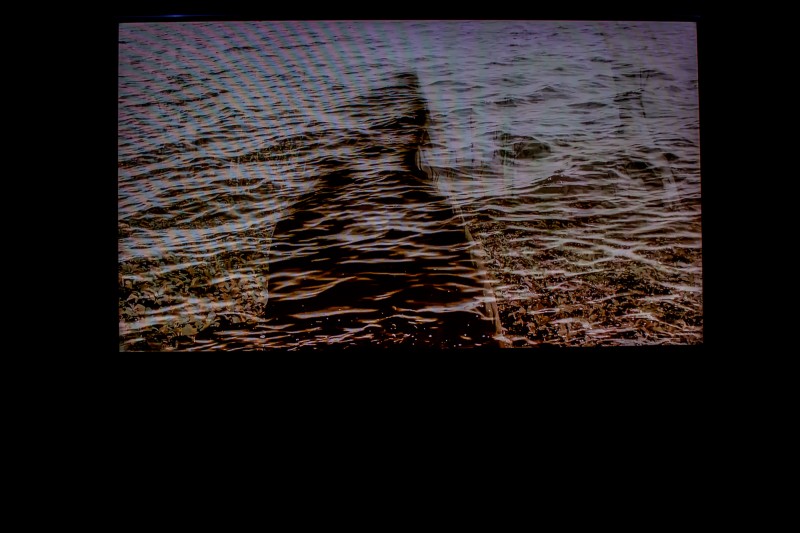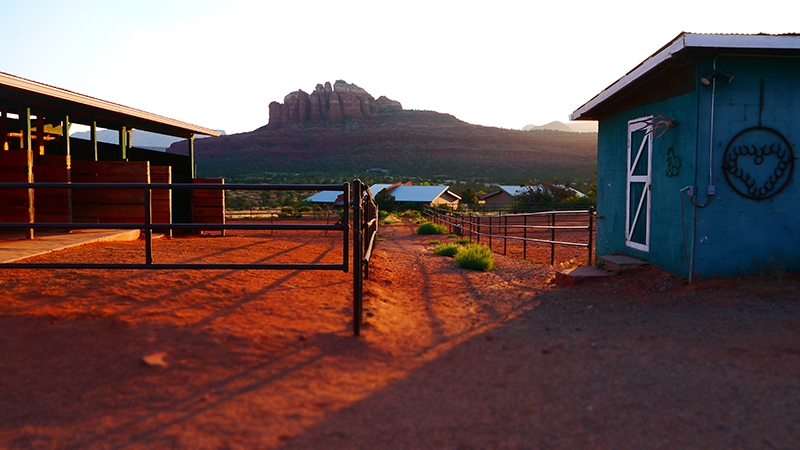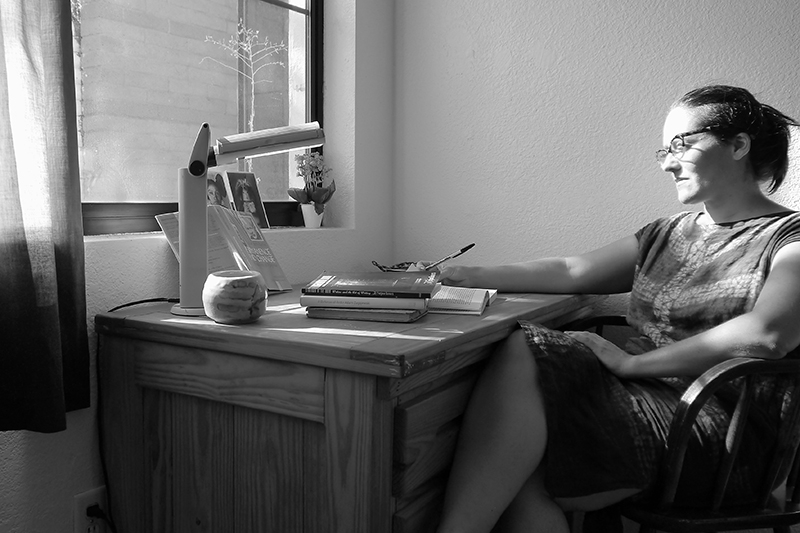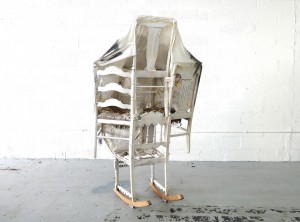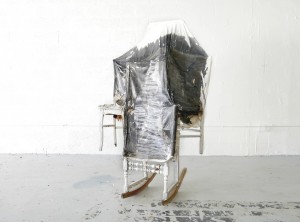The Codex of the Films and Pictures of Anja Marais: Oneiric Metaphors – by Rosa JH Berland [write-up]
The disquieting allure of Anja Marais’ practice comes from a masterly weaving of mysticism. Formally, the work falls somewhere between the grace of Jean-Eugène-Auguste Atget, the shadowy poetry of Surrealist film making, the complex ornateness of Matthew Barney’s films and feminist body art. These intricate worlds are made from handmade sculpture, video, pixilation animation video, and photography. They captivate, one can hardly wait for the next scene or chapter to emerge.
Most recently, Marais has embarked on a series of self-titled “visual poems” including a sequence of related projects comprised of moving picture, photography, costumes, hand made sculpture and mixed media. These “poems” take place in natural environments such forests, hills, expanses of grass, or next to a body of water and appear to transcribe memory and experience, particularly that of woman. The stories are often-wordless visual worlds in which secrets are ritually revealed, the passage of time is shown as wrinkles in a cloth across a woman’s face, the waves in water, or a cocoon like emergence. The protagonists are feminine, in some cases hybrid mythological creatures, veiled or similarly disguised, on occasion grotesque, serving as metaphors for the feminine experience. Marais’ layered work is made up of a truly tactile world of gothic mystery, mirroring the cycle of life using a codex of hybrid creatures, symbology of the natural and religious world, all equally captivating and mysterious.
In all of her work, the viewer is overwhelmed by a sense of shamanism; the women in these series seem to immerse themselves in their own corporeality. Through the depiction of ritual and the association of woman with nature, and the natural world, Marais implies that what is considered abject by our culture, the often-messy cycle of life, birth, death, etc. is in fact, an intrinsically connected part of life, a source of introspection and power, and as such is a rite of passage.
To this end, in the films, and the two dimensional works such as the mixed media works Cathedral Series (2014) Marais poetically and unflinching depicts allegories for life cycles including birth, death and loss as processes or stories, memorialized as ritual and as ephemera, fluid, and cyclical. Water reappears repeatedly, a natural element, and a site for corporeal events. There is a preternatural sense of memory, experience and living, at the same time there is a palpable sense of disintegration and aging, a flux. This sense of memory and disintegration is seen in the fluid film Cathedral (2013), a story of a woman on a journey. This traveller is a veiled woman in somber dress; the stop animation makes the young actor’s gait that of elderly woman, and serves as a parable for the cycle of life. The elusive woman travels through a stark wintery wood to a river, where she finds a bed, and lingers with her fingers in the pulsating water, a metaphor for sexuality. Inspired by the poem by Anna Akmatova, Lying Within Me, Marais’ heroine is going in search of stones, each like a hard impenetrable egg, and scoops them up into her dress, digging in the dirt, and burying them in a ritual manner. This white secret, is hidden, and buried, veiled in some way. Time lapses, like waves on water, and it only at the end that we see a shadow of the woman’s face. Her story is accompanied by a soundtrack of suspenseful music and the sounds of nature, singing birds and whispering wind.
In this film, and her practice is general, Marais forces a collision between the motifs of the monstrous feminine from various genre including horror and body art within her own narrative of the feminine life cycle set outside the confines of homogenous society; this is not a spectacle of the pornographically abject, but rather a poetic recording of experience, mnemonic storytelling and an engagement in the cyclical nature of the feminine experience. Intrinsically, Marais approaches the way in which the depiction of the feminine as abject is part of a social order by having her actors act out and fully immerse themselves in an almost celebratory series of ritual, often including blood and other bodily fluids. Watching these abstracted rituals is one way Marais forces the viewer to confront his or her ideas of place, identity and life. To this effect, still images, from the Cathedral project are carefully worked to create a haptic effect. They serve as reliquaries for events, for example, in the mixed media work Transparency of Rocks (2014) a child’s face is covered in rocks, an allegory for the buried egg or child in the film Cathedral (2012), a loss that becomes an artifact, aging, held tightly, the pigment cracked, scraped and peeling, as if slowly dying. Labor of Burden (2014) shows the white hands of the veiled woman from the film Cathedral burying the dead, inanimate rocks. Because Marais’ mode of working is so enigmatically abstract, one could read this burial as a metaphor for a number of things, memories of past infractions, loss of a dream or lover, child, the stillborn child or another dark secret, the white stone of Akmatova’s poem, the secret that lies within the veiled woman.
This suggestively unknowable allegorical mood is precisely what makes Marais’ work so evocative and captivating, there is openness and permeability and yet at the same time, a fineness of craftsmanship and image that as a whole is aesthetically remarkable.
RJHB
Rosa JH Berland, M.A., University of Toronto, is an art historian based in New York City. She has held positions at MoMA, & the Guggenheim Museum & is currently writing a monographic book on allegory in the work of the late American painter Edward Boccia. As well, she has contributed to numerous scholarly books, exhibit & collection catalogues, and academic journals. Ms. Berland’s research interests include expressionism, mysticism, and the ocular in modern art.












